Introduction
With 900 million internet users, India is the second-largest online market in the world. This exponential growth in digital users loosely translates to their jacked-up online activity, and e-commerce is a significant part of it. But more is not always merry for businesses – the influx of users and organizations within the retail market has brought in more competition for brands, making e-commerce a highly competitive space.
These modern customers now face an influx of options to shop from. Thousands of e-commerce websites try to sell similar, if not the same products to them each minute. Yet, their online spending is tightly budgeted more than ever before!
So how do e-commerce sites dominate the industry by cracking into a customer’s wallet and meeting sales targets? One reliable method is through product recommendations – a dynamic prediction system used to prominently display items of interest to the customer.
More than 71% of e-commerce sites recommend products on their homepage. This has helped them increase engagement, conversions and revenue. While recommendations contributed to only 7% of visits, they accounted for 26% of revenue.
While we will double dap in detail what recommendation systems are and how they work, let’s understand their basics before proceeding. The below funnel shows how recommendations convert warm leads into high-intent shoppers by simplifying product discovery for them.
Recommendation systems are built using algorithms that analyze heaps of data to understand shoppers’ behavior and anticipate their future needs. Exactly the way Netflix knows which movie you want to watch next. Analyzing & predicting customer needs like this is known as customer profiling, which helps personalize recommendations.
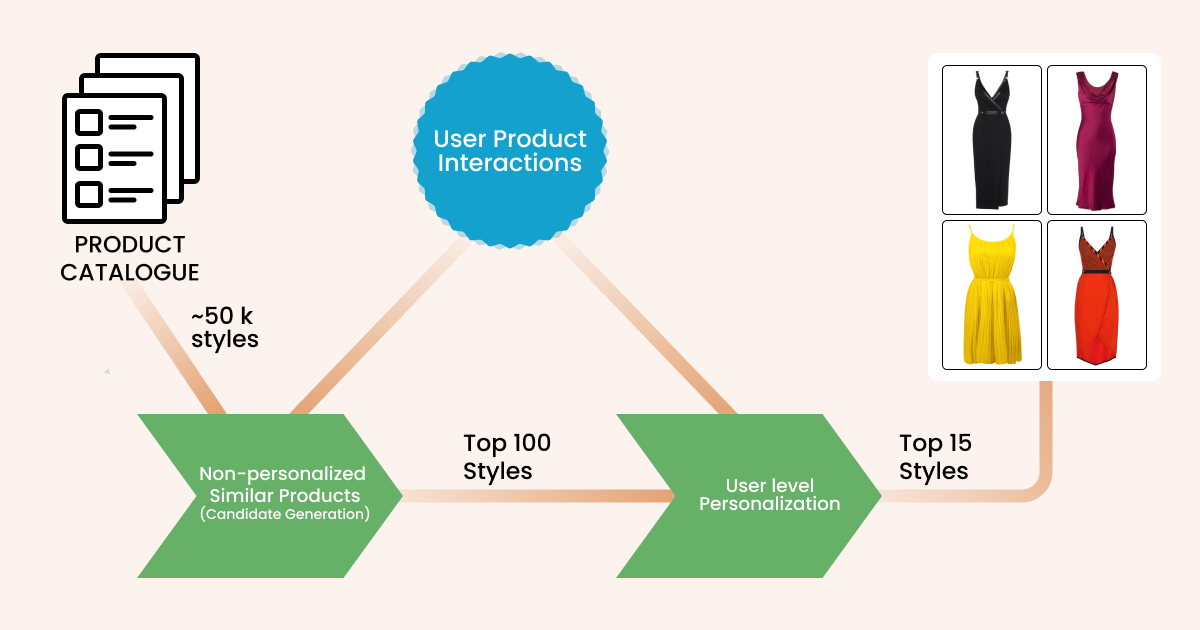
Once shoppers click on such recommendations, they are 4.5x more likely to add the item to a cart and complete their transaction – this is because the system suggests to their products based on their shopping behavior or what it found the maximum users buying along with the product.
These recommendations lead to a 10% higher Average Order Value (AOV). So let’s just agree, recommendations not only make the buyer’s life easy, but they are also the ultimate tool for an e-commerce marketer to boost sales & meet targets!
E-Commerce Conversion Rates: Calculation & Interpretation
The goal of most recommendations is to drive purchases. However, this goal can vary based on the website’s nature to include actions like contacting customer service, subscribing to a newsletter or filling in a lead-generation form.
As a result, conversion is the ratio of website sessions to the completion of this end goal (transactions, forms, results etc.). It helps measure the percentage of visitors who completed the site’s intended action. Let’s say the goal was to purchase the item, then conversion is calculated by dividing ‘the total visitors who purchased by the total website visitors. Multiply this into 100, and that’s your conversion rate!
For instance, if your website had 80,000 visitors of whom 6,000 purchased a product, then the conversion rate is 7.5%.
The formula goes: E-commerce conversion rate (7.5%) = Total visitors who purchased (80,000) / Total website visitors (6,000) x 100
While the success of product recommendations is best measured by conversion rates, Average Order Value (AOV) and Click-Through Rate (CTR) also reflect the benefits of assisting a customer with products that best suit their needs.
The average order value is the average dollar (rupee) amount spent by a website’s customer. It is calculated by dividing revenue by the total number of orders, proving how successful recommendations have been in upselling / cross-selling.
The formula goes: Average Order Value (AOV) = Revenue / Order of Numbers
Likewise, Click-Through Rate represents the number of times a specific link on the website has been clicked. It is calculated by dividing the clicks by impressions (i.e. the number of times the link was visible).
Formula workings: CTR = Clicks (Number of people who clicked the ad) / Impressions (Number of people who viewed the ad) x 100
CTR points to the % of high-intent buyers, as those who click a recommendation are nearly 2x more likely to come back! In short, if a recommendation has been clicked, it is highly productive in increasing the conversion rate and revenue.

What is a Product Recommendation?
By now we understand that product recommendations do behind-the-scenes magic by analysing thousands of shoppers’ past transactions and predicting their future needs. This analysis is then shown in the form of recommendations to the website visitor, incentivising them to buy more and faster.
Let’s take a quick look at the below image from FirstCry’s website. Both the titles ‘you may also like’ and ‘frequently bought together’ are recommendations by the brand nudging its users upon purchase or selection.
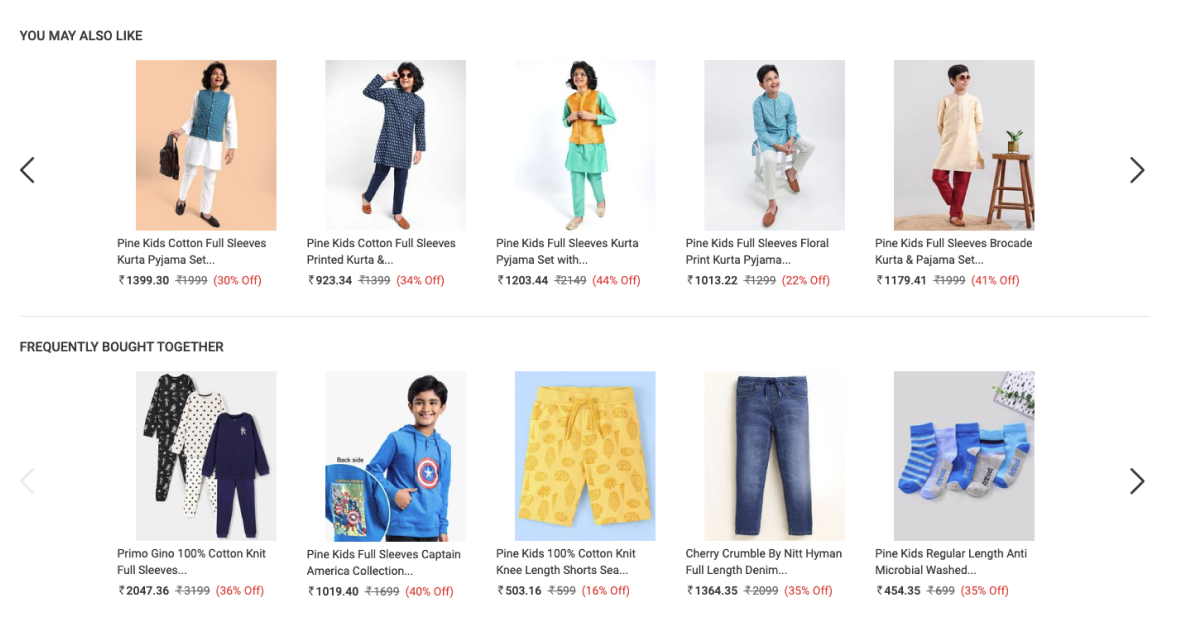
While most e-commerce sites struggle with conversion rates between 2.5 to 3%, product recommendations can nudge over 49% of visitors to buy products that they originally never intended to.
If you’re not already convinced, check out these four important reasons why you must include product recommendations on your e-commerce sites –
- Improved user experience –
- Better customer engagement –
- Increased revenue –
- Builds loyalty –
How are recommendation engines built?
We briefly discussed how algorithms are used to show personalised recommendations to an e-commerce site’s visitors. Let’s deep dive into that.
A product recommendation engine analyses & models tonnes of user data using Machine Learning (ML). First, data (input) regarding users’ past transactions, browser history, link clicks and other engagements are received. Once this data is cleaned and users with similar behaviors are segmented based on different parameters, a recommendation system is created.
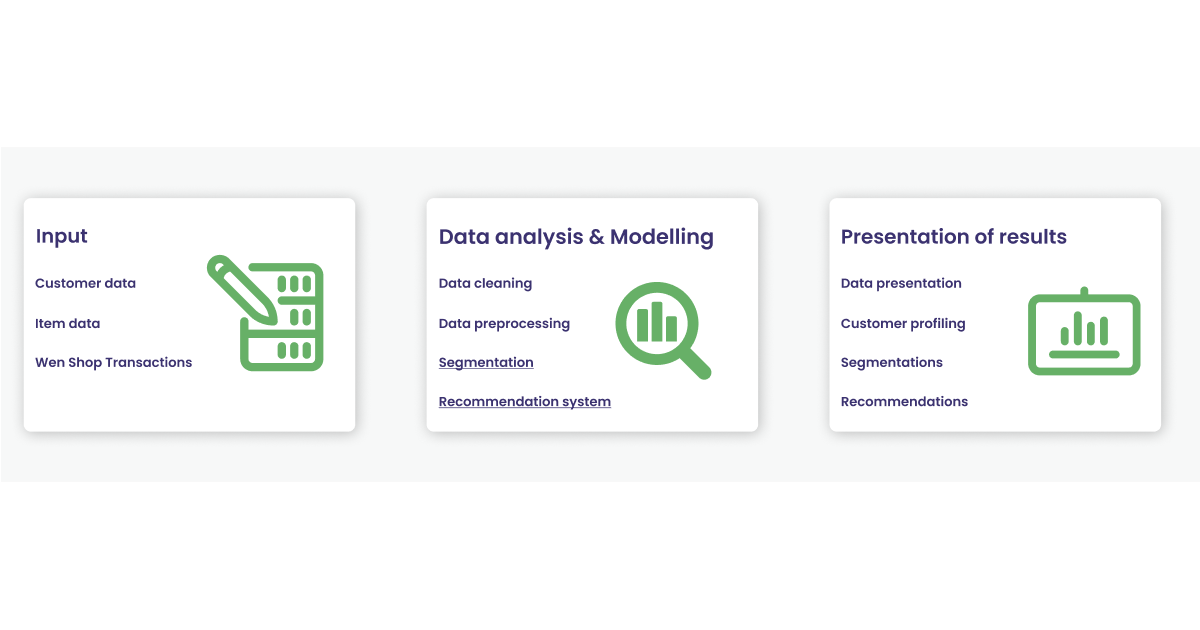
Most recommendation systems are implemented using one of these three approaches:
- Collaborative filtering: This model works on the assumption that users who bought similar products in the past, will likely repeat the pattern in the future. So, if Jasmine bought a pizza and salad, whereas Aliya bought them plus a diet Coke, Jasmine will do so too.
- Content-based model: This model uses data from cookies of all the sites visited to understand the likes and dislikes of each user. Recommended products are then filtered on the assumption that you will enjoy items similar to your past interactions.
- Hybrid filtering: This method combines content and collaborative-based filtering to account for shared preferences among users but displays results after filtering it based on individual users’ preferences. Take Netflix for instance, it filters movies based on the habits of similar users but shows only those that match this user’s past interactions.
10 product recommendation strategies to boost your e-commerce conversions
COVID-19 changed the way we shop. In developing countries alone, the proportion of online shoppers has shot up from 33% to 60%. As a result, several businesses were forced online. However, many of them still struggle in personalising recommendations, thereby losing traffic to competition.
On the other hand, successful businesses that show personalised recommendations are 91% more likely to make the customer purchase. The key is knowing whom to show what. So here are a few types of product recommendations that can help in answering this question –
- Personalization – Did you watch an action thriller or purchase a blue dress? Have you repeatedly ordered food from the same restaurant? All of this data is analyzed to understand a customer’s likes and dislikes & make relevant recommendations.
- Related products: With thousand available to shop from, a customer could easily feel frustrated by having to navigate from one page to another. But this is where the ‘Similar Products’ recommendation category comes to our aid.
- Cross-selling & up-selling: It is almost intuitive to think that a customer who recently bought a phone will soon need a case. Similarly, someone who is exploring a jacket may need more winter wear.
- Social proof: Shoppers thrive on reviews because it gives them a sense of security and helps build trust. According to research, more than 47% of shoppers look for (visual) social proof on e-commerce sites.
- Seasonal – It is only natural that customer needs to evolve with changing seasons. This category of recommendations works well in the case of food & fashion products.
- New arrivals: In this era of fast fashion and rapidly evolving technology, recommendations based on ‘new arrivals’ are an effective product promotion strategy.
- Bundling: Shopping trends that tend to repeat across a wide customer base can be leveraged to show recommendations in categories like ‘Customers who viewed this also viewed’ or ‘Frequently bought together’. Therefore products are bundled together, usually around checkout, boosting sales and Average Order Value (AOV).
- Based on browsing history – It is a human tendency to browse e-commerce websites without serious intent to purchase. Therefore, algorithms use their past browsing data to identify their needs/desires and show recommendations accordingly.
- Products back in stock: Common on furniture e-commerce sites, this type of recommendations leverage products that are sold out faster to drive sales.
Whatever type of recommendation you choose, make sure you position it appropriately. Else, they’re all just lost sales opportunities.
Product recommendation examples from leading brands
Solving for product discovery results in a guaranteed improvement in the user experience for e-commerce sites. No wonder market dominators like Amazon, Myntra or Netflix ace the ‘product recommendations’ race to stay on top. Let’s study 3 brands in detail to understand how recommendations have benefitted them –
Example 1: Amazon
Amazon uses a vast range of recommendation styles placed strategically across the user journey to achieve higher click-throughs and conversions.
Here are some examples of Amazon India’s ‘Customers who bought this also bought’ recommendations. According to Mckinsey, this type of personalized recommendation contributed to over 35% of total revenue and caused a 29% uptick in sales.
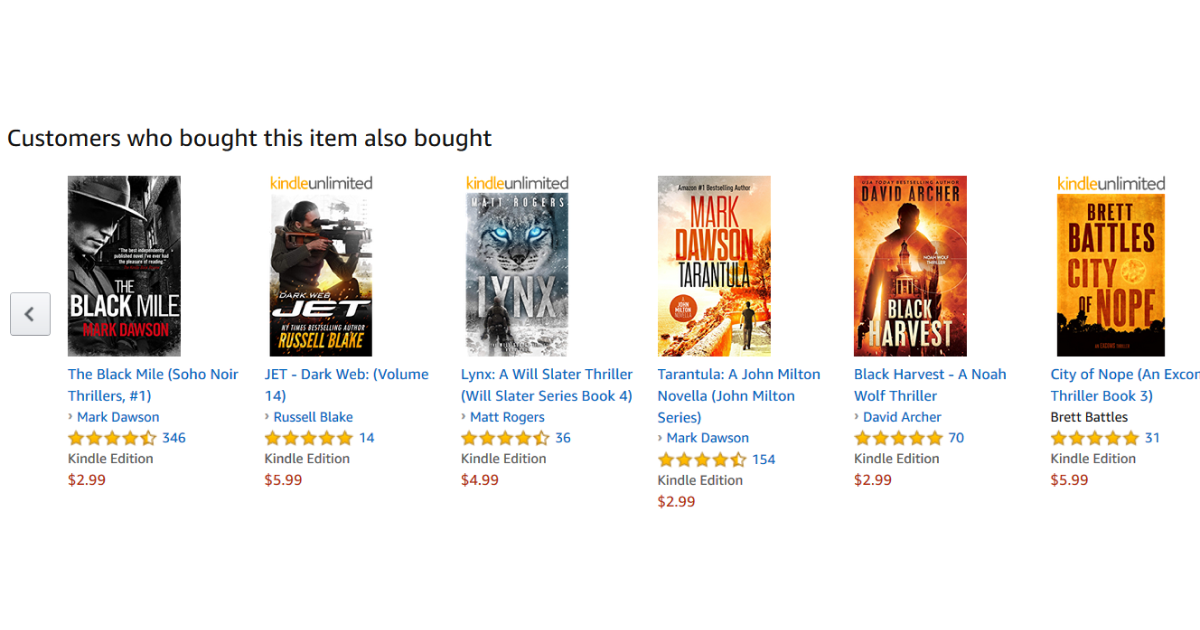
Example 2: Nykaa
One of India’s largest beauty & wellness retailers, Nykaa used the ‘You May Also Like’ recommendation type to cross-sell products based on shared interests among user groups. As a result, 50% of Nykaa’s customers became routine visitors by 2020 and their buying guide-styled recommendations contributed 3% of Gross Merchandise Value (GMV) in that year.
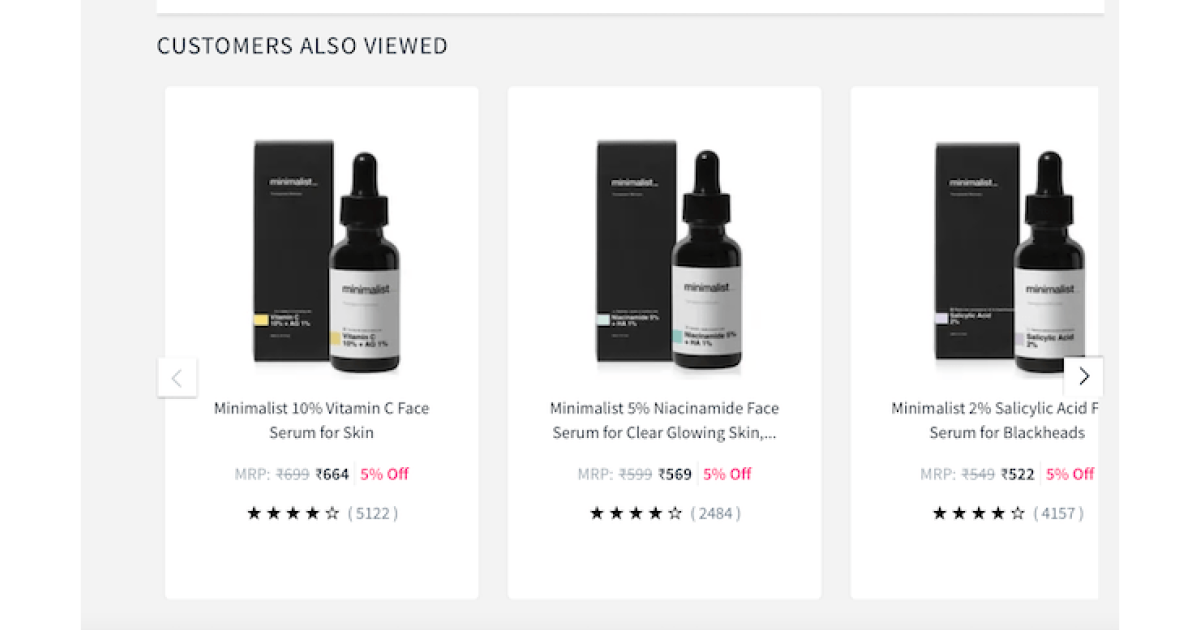
Mistakes to avoid
It’s not enough to show product recommendations. Everything else from timing to placement plays a crucial role in their success. Here are 5 mistakes to avoid –
- Incorrect placement – Showing recommendations for shorts on a laptop product page will not help. Instead, showing related products like laptop bags will lead to higher conversion.
- Overwhelming recommendations – Too much information is noise. And too many recommendations translate to none at all. So, don’t overcrowd the buyer’s screen with recommendations.
- Context-insensitive recommendations – Every recommendation must be compatible with the buyer’s context – location, demography, or purchase history. Only then will a buyer feel understood and not spammed.
- Lack of A/B testing: A/B testing is a prerequisite to optimise parameters like number, look and positioning of recommendations. Doing so will help identify & retain the recommendations with higher conversion rates.
- Poor navigation: A recommendation is only as good as the conversions it drives. Therefore, any friction in the user’s journey post clicking on the link must be removed. All important pages like contact us, product catalogue and cart must always be easily accessible.
Conclusion
Understanding the true potential of product recommendations in driving sales, increasing order values and engaging customers better can act as an eye-opener. But even seasoned marketers fail in using recommendations to their full potential.
If you think that’s because running recommendations is either too expensive or too complex, this is your moment of truth – it’s not! WebEngage’s product recommendation tools are remarkably easy and have helped many clients bring in additional revenue.
Nearly 81% of shoppers agreed to purchase upon receiving a personalized product recommendation marketing email, a facility that helps WebEngage clients excel. Using our pre-populated templates on marketing channels, WebEngage users can devise highly engaging, and creative ways to touch base with their customers.
WebEngage has a comprehensive package to cater to your e-commerce site’s recommendation system requirements. If you’re hunting for options to increase revenue, take a demo with us today and watch your business transform!







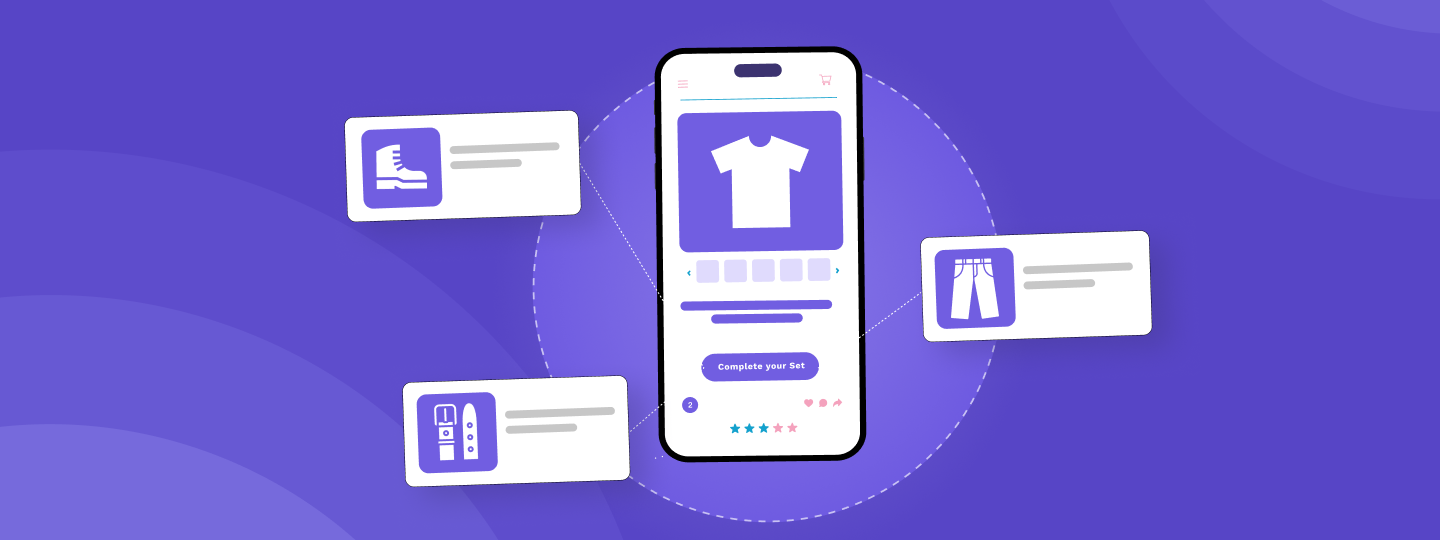
 Vanhishikha Bhargava
Vanhishikha Bhargava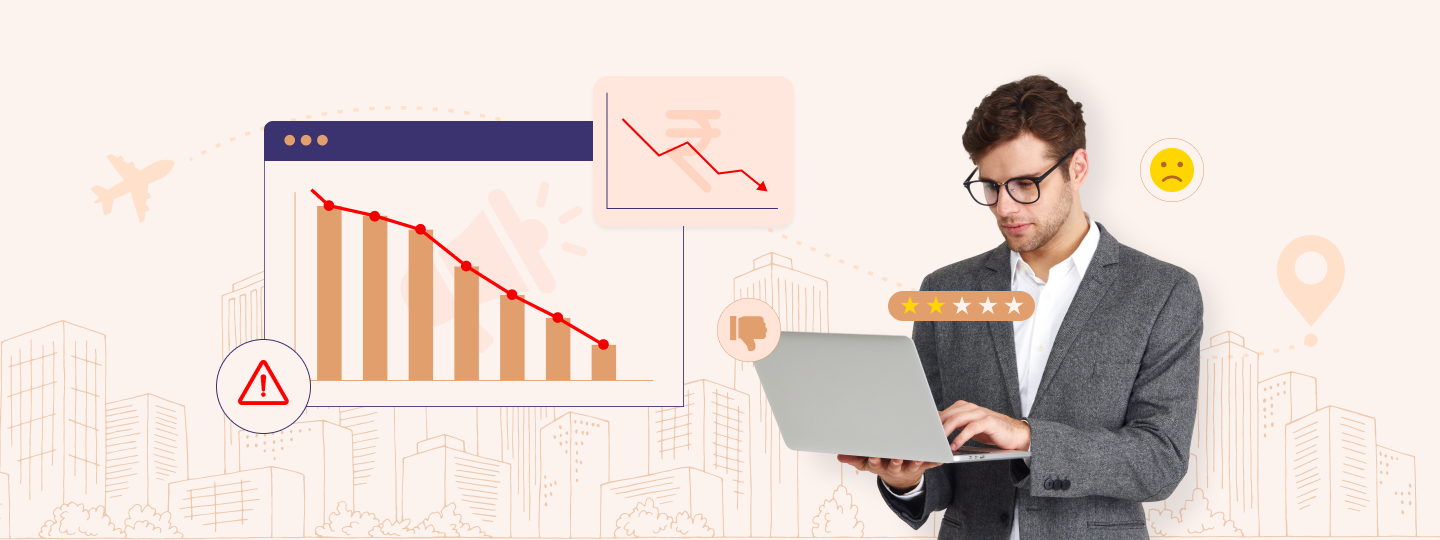
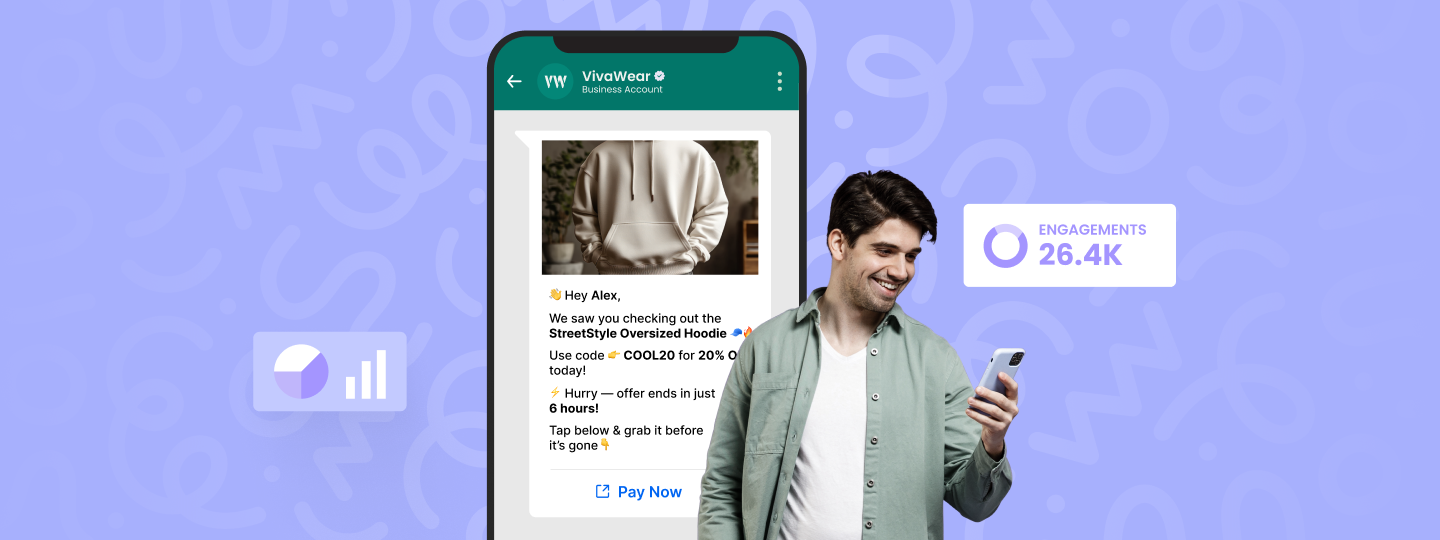
 Prakhya Nair
Prakhya Nair